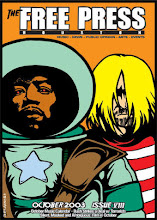Shutter Island

Nobody will ever accuse Martin Scorsese of making bad films. That's because even his bad films are well crafted movies that you admire but only watch once. Shutter Island is too immersed in the seclusion of its own world to be the kind of Scorsese film you will watch over and over again (Goodfellas, Casino, even Departed or Alice Doesn't Live Here Anymore). Shutter Island exists along side other Scorsese films that are beautifully crafted yet instantly forgettable, a list that includes Bringing Out the Dead and The Age of Innocence.
I'm not in the camp that would call the film Shitter Island but it's obvious how the surprise twist turns out. This is a big reveal with no reveal, a fact compounded by the fact the give-away trailer, in various forms, has been running for months. In some strange time warp way this well paced and bountiful production set in the early 1950s could've been made in the 50s save for the gorgeous color saturation of Robert Richardson or maybe a brief freeze frame and the slick modern editing of Thelma Schoonmaker. An atmospheric hurricane takes place outside barred windows but has enough production value to be a film it and of itself.
Shutter Island starts out with federal marshalls Leonardo DiCaprio and Mark Ruffalo investigating a disappearance at an asylum located on a small island. The institution is run with a gloved iron hand by psychiatrist Ben Kingsley, whose colleague Max Von Sydow may be a ex-Nazi scientist. There are insinuations and suspicions greeting every investigative query advanced by DiCaprio. At some point Scorsese even confuses the audience by using similar but different looking actresses, Emily Mortimer and Patricia Clarkson, to play the same role. Ditto as another scar faced inmate resembles De Niro, who used to be as ubiquitous in Scorsese films as DiCaprio is now, only it isn't Robert Deniro but rather Elias Koteas. Then in brief almost cameo roles we have actors with instantly recognizable voices or manners, like Ted Levine or Jackie Earle Haley, walking on to advance the plot.
It's easy enough to give Scorsese a pass due to the professionalism from all involved but as far as an enjoyable couple of hours a the ciinema I had more pleasure from the mindless kid-friendly Percy Jackson and the Olympians.












